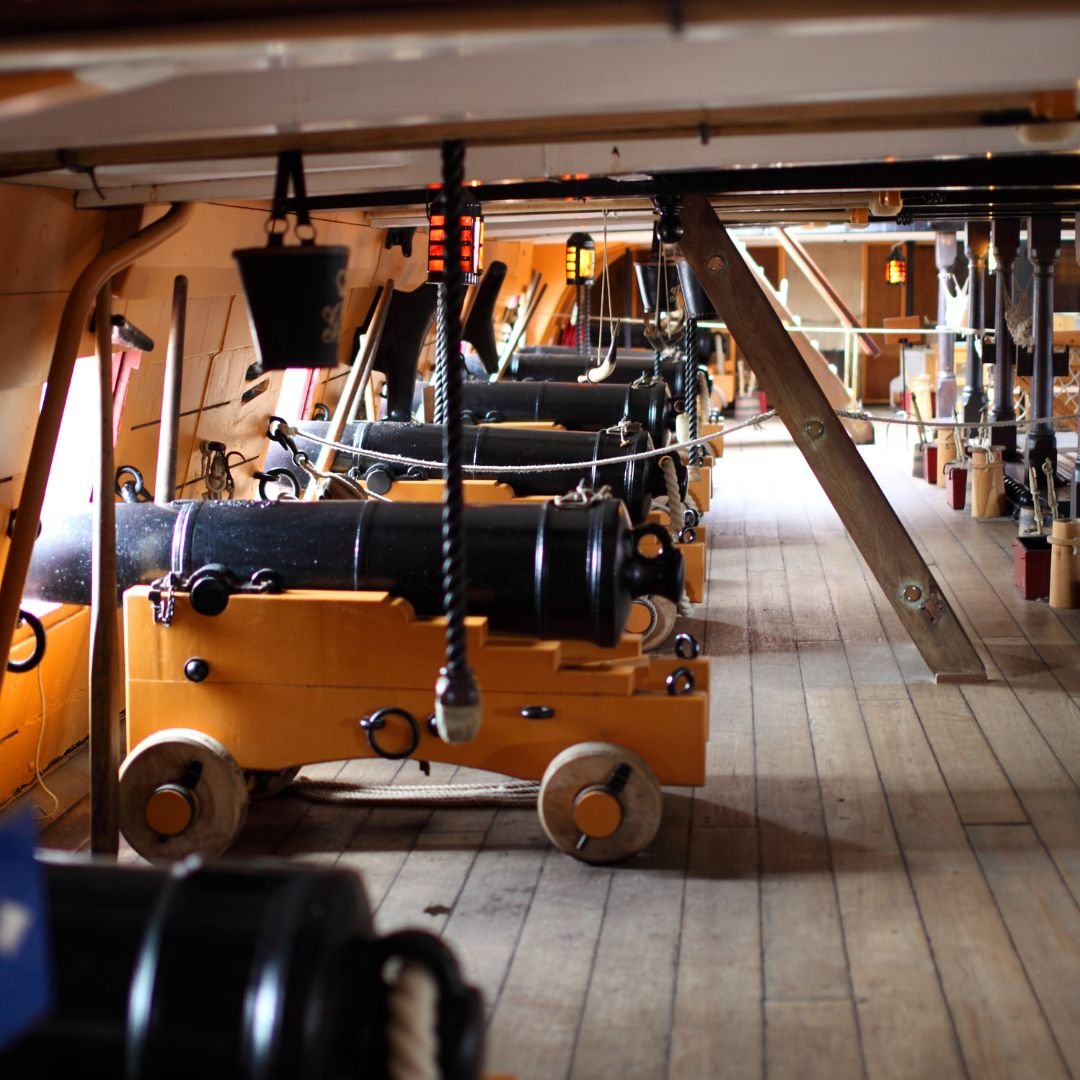HMS Victory: Oldest commissioned warship in the world
HMS Victory is the oldest commissioned warship in the world.
It’s also one of the most celebrated warships in Britain’s naval history - and it was Lord Nelson's flagship in his victory at the Battle of Trafalgar.
HMS Victory was designed by Sir Thomas Slade and built at Chatham Dockyard.
More than 2,000 oak trees were used in the construction of the hull – equivalent to 60 acres of forest!
The final cost to build this incredible warship was £63,176 (that’s more than £50 million today).
Victory was launched in 1765 but was not commissioned until 1778.
This long period of weathering meant her timbers were well seasoned and was a major reason for her long life.
The impressive ship had 104 guns, 27 miles of rigging and four acres of sail - it was the most powerful type of ship of her day.
Quickly proving successful, Victory could sail faster than many of its smaller consorts, thanks to the excellent design of the underwater hull.
However, the decision to name the ship Victory was not popular.
The previous ship of that name had sunk with all on board in the English Channel in 1744, so sailors believed the name unlucky.
This historic vessel is probably best known as Horatio Nelson's flagship at the Battle of Trafalgar on 21 October 1805.
Horatio Nelson is generally regarded as the greatest officer in the history of the Royal Navy.
His reputation is based on a series of remarkable victories, culminating in the Battle of Trafalgar where he was killed in his moment of triumph.
Nelson was shot by a French sniper.
He was struck while pacing the quarterdeck of his ship HMS Victory with Captain Thomas Hardy, at about 1.15pm.
He survived for three hours, long enough to hear from Hardy that the British had achieved a great victory.
In the famous battle, 27 ships commanded by Admiral Nelson confronted a combined French-Spanish fleet of 33 ships, which was trying to return to the Mediterranean.
Nelson’s death became the central event of the Battle of Trafalgar. Even at the time, it overshadowed the triumph of the great victory.
Ordinary seamen broke down crying when the news spread through the fleet and when the news reached Britain, the nation went into mourning.
The ship was badly damaged at Trafalgar, both in the masts and hull, so when it returned to Britain with Nelson's body on board in 1805, it was given a major refit.
Prior to this, the ship was also involved in the Siege of Toulon in 1793, as part of an Anglo-Spanish fleet that was eventually forced to surrender the French port to Napoleon’s forces.
It also took part in the siege of Calvi in 1794, as part of the British fleet that ousted the French from Corsica.
In 1831, the Admiralty issued orders for Victory to be broken up and her timbers reused in other vessels.
A public outcry against the destruction of so famous a ship led to the order being held in abeyance and Victory was left, largely forgotten, at a Portsmouth mooring.
Today, HMS Victory is permanently displayed in Portsmouth harbour - and you can book tickets to see the famous ship for yourself.
With over 260 years of history and participating in six major battles over an unusually long service, the National Museum of the Royal Navy is committed to preserving Vice-Admiral Lord Nelson’s flagship.
Someone who recently visited the ship wrote on TripAdvisor: “This was the trip of a lifetime, a big trip for us which was years in the planning, and it didn't disappoint.
”A thoroughly interesting exhibit, even though some was covered as part of the restoration.
”The fact that you could still go and ask questions, see the shipwrights working and learn more about the restoration process was great.
”The guided tour around the ship itself was fantastic, Simon was really knowlegeble and even though the group was small with a mix of young children and adults.
”He managed to keep everyone engaged without dumbing anything down.”
Another person added: “Brilliant tour on the HMS Victory. Simon our tour guide was exceptional. He was extremely knowledgeable and always open to questions. A must do for lovers of history.”
The ship is currently undergoing the biggest restoration programme in her history following guidelines set out in the National Historic Ships UK Publication ‘Conserving Historic Vessels’.
You will be able to explore every nook and cranny of HMS Victory, from the Great Cabin, where battle plans were drawn up, right through to the lower gun deck.
Occasionally, Captain Hardy may be in his cabin, greeting visitors with tales from his adventures at sea.
To this day, it retains its status as a fully commissioned ship in the Royal Navy and serves as the flagship of the Naval Home Command.
Although no longer in active service, it’s said to be inspiration for the fictional Royal Navy ship HMS Dauntless in the 2003 Disney film Pirates of The Caribbean: The Curse of the Black Pearl.
The ship, in the film, is easily recognised by her distinctive black hull and sails.
Captained by Captain Jack Sparrow, the Black Pearl is said to be "nigh uncatchable".
In the first three films, she either overtakes or flees all other ships, including both the Interceptor, which is regarded as the fastest ship in the Caribbean.
As stated in Dead Man's Chest and At World's End, the Black Pearl is "the only ship that can outrun the Dutchman."
This is evidenced in the maelstrom battle between the two ships in the movies.
If you enjoyed this blog post, please follow Exploring GB on Facebook for daily travel content and inspiration.
Don’t forget to check out our latest blog posts below!
Thank you for supporting Exploring GB.












